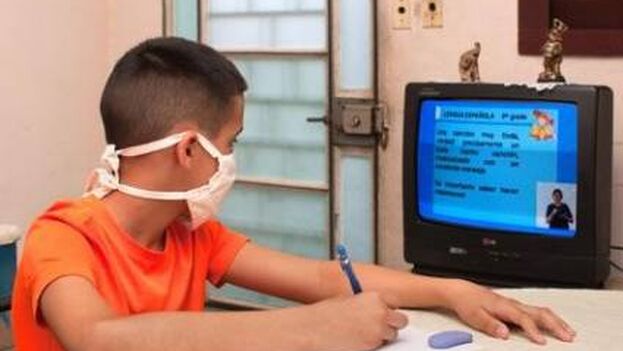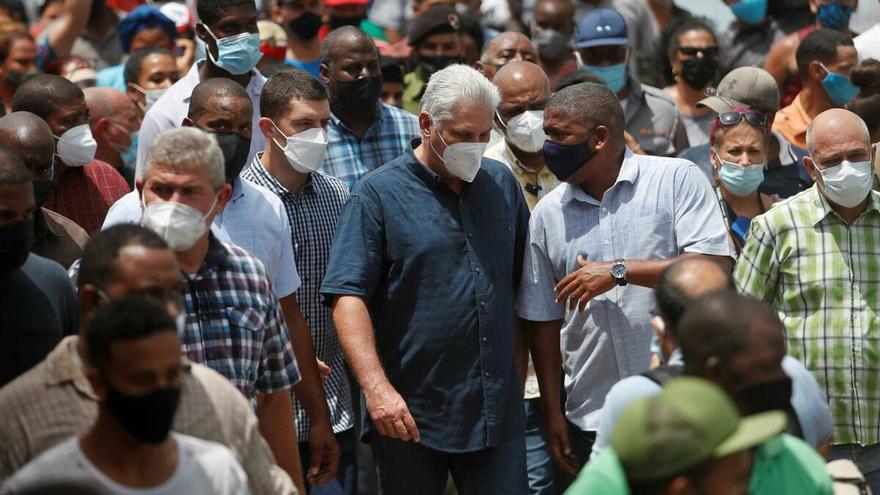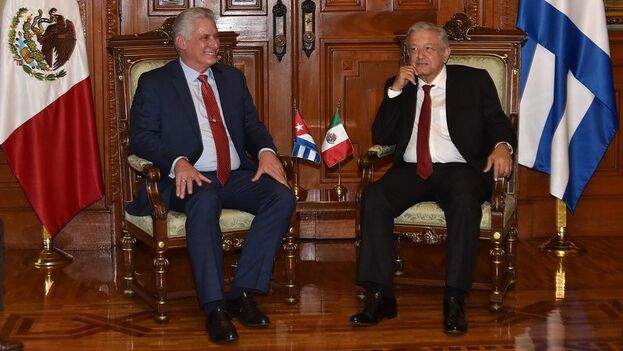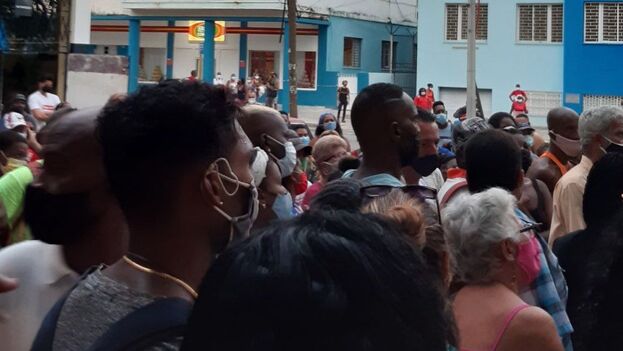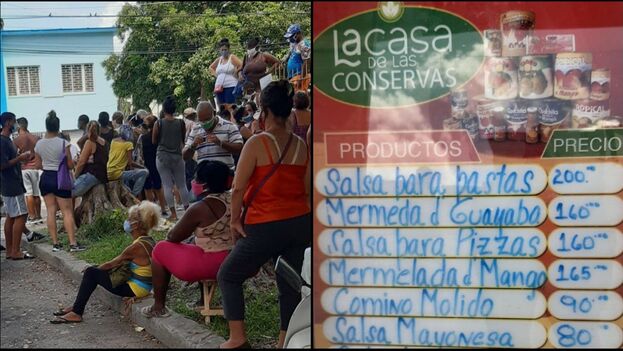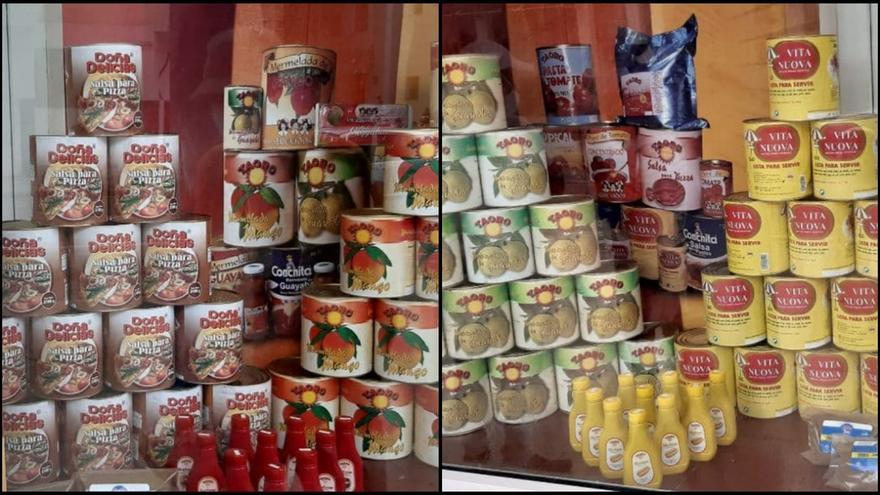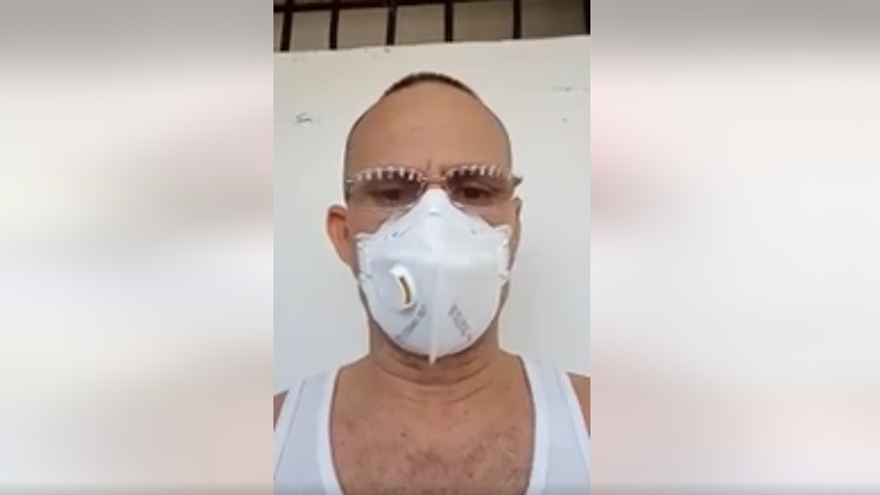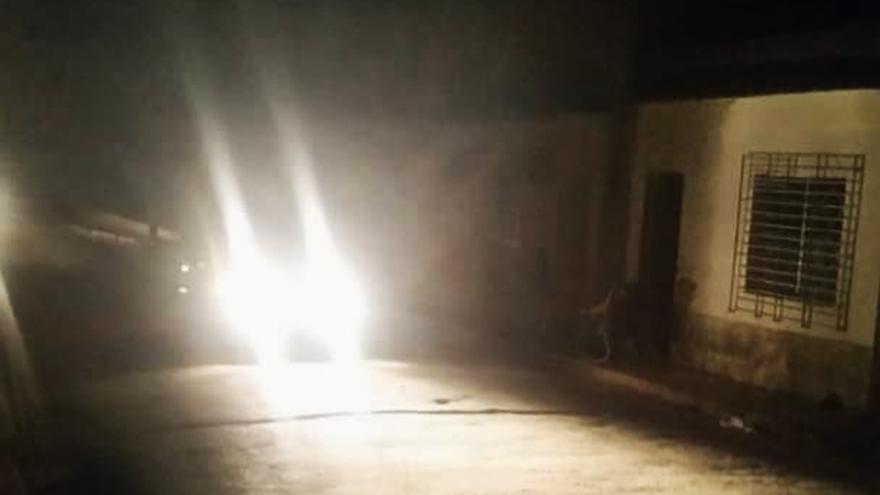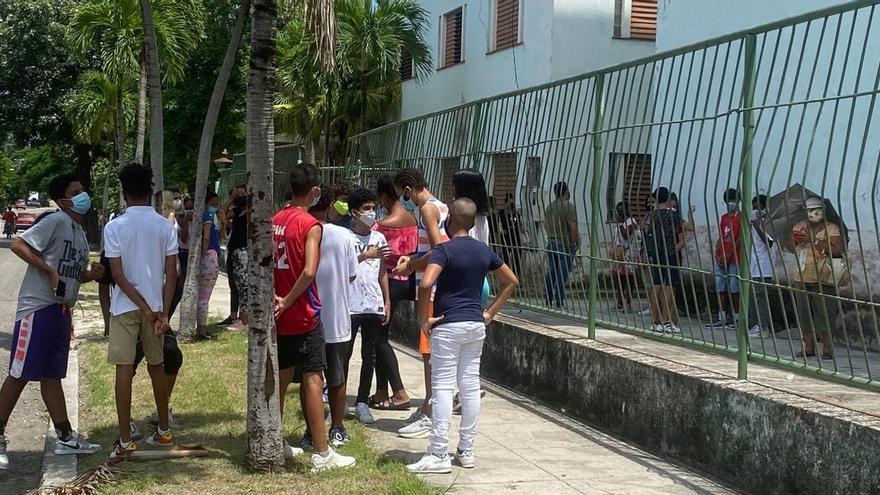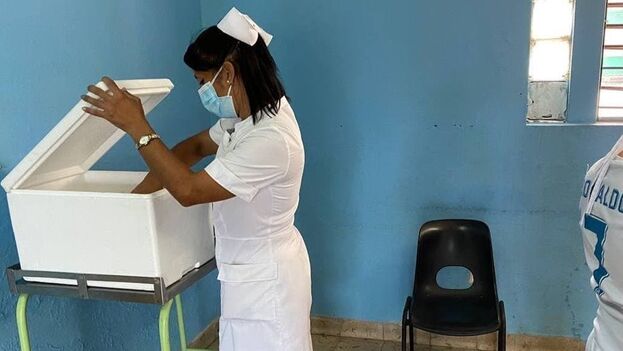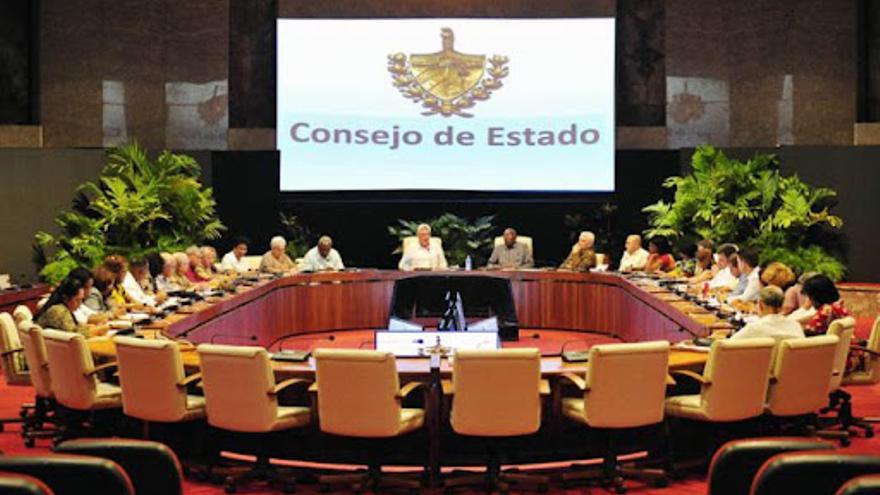
![]() 14ymedio, Mexico, 16 September 2021 — With a speech during the military parade that commemorates the Independence of Mexico every year and a place on the stage, it was clear this Thursday the leading role that President Andrés Manuel López Obrador reserved for his Cuban counterpart, Miguel Díaz-Canel.
14ymedio, Mexico, 16 September 2021 — With a speech during the military parade that commemorates the Independence of Mexico every year and a place on the stage, it was clear this Thursday the leading role that President Andrés Manuel López Obrador reserved for his Cuban counterpart, Miguel Díaz-Canel.
Despite the words of the Mexican president a few days ago, the Cuban was not just another guest: it is the first time that a foreigner participated in this event from such a privileged place, delivering a speech on the presidential platform before the main figures of the Government.
The importance of the visit was not only noted by López Obrador, since from the moment the delegation left from the airport in Havana it was clear that it was not a routine trip. At the foot of the ladder, Raúl Castro himself, Vice President Salvador Valdés Mesa, along with the ministers of the Armed Forces and the Interior, among other figures from the Cuban leadership, said goodby to him in the morning.
In his speech, Díaz-Canel appealed to the usual victimizing rhetoric. “We suffered the attacks of a multidimensional war with an opportunistically intensified criminal blockade with more than 240 measures in the midst of the covid-19 pandemic, which has such dramatic costs for everything,” complained the hand-picked president, while denouncing that his government is the victim of “an aggressive campaign of hatred, misinformation, manipulation and lies mounted on the most diverse and influential digital platforms that ignore all ethical limits.” continue reading
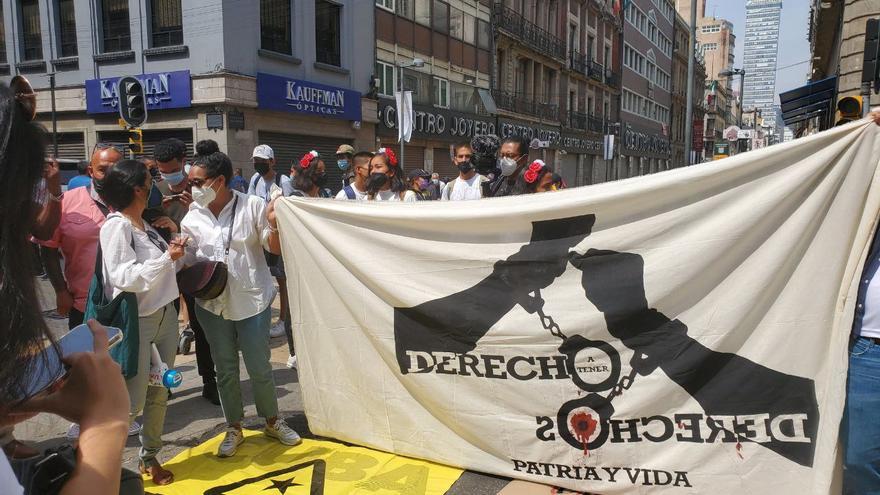
López Obrador’s message did not lag behind in pointing out to his northern neighbor the ills that afflict the Island. “In all frankness, it seems bad that the United States Government uses the blockade to impede the well-being of the people of Cuba with the purpose that they, forced by necessity, have to confront their own government,” he said, and asked: “I hope President Biden, who has a lot of political sensitivity, acts with that greatness and puts an end, once and for all, to the policy of grievances towards Cuba.”
The Mexican president, also in an unprecedented gesture, spoke to the Island’s exile community, mostly in Florida. “In the search for reconciliation, the Cuban-American community must also help, putting aside electoral or partisan interests,” he declared. “We must leave resentments behind, understand the new circumstances and seek reconciliation. It is time for brotherhood and not for confrontation. As José Martí pointed out, the shock can be avoided, with the exquisite political tact that comes from the majesty of disinterest and of the sovereignty of love.” And he exclaimed, twinning both countries in the same phrase: “Long live the independence of Mexico, long live the independence of Cuba.”
“We may or may not agree with the Cuban Revolution and with its government, but having resisted 62 years without submission is an indisputable historical feat,” said López Obrador in a message that several analysts have already classified as directed to Washington and seeking another diplomatic thaw.
To this, the Cuban historian living in Mexico Rafael Rojas replied: “That maxim, unfortunately, has not been fulfilled nor has it been fulfilled in Cuba for sixty years,” he said in a tweet. “Whoever disagrees is excluded in multiple ways, from prison to exile.”
In the Cuban delegation notably was the presence of Luis Alberto Rodriguez Lopez-Calleja, Raul Castro’s former son-in-law and CEO of the military conglomerate Gaesa, which is on the list of companies sanctioned by the Office of Foreign Assets Control of the United States, and who was presented at the event as “principal advisor to the President of the Republic of Cuba.”
Meanwhile, a few yards from the Zócalo, where the ceremony was taking place, a score of Cubans gathered at the central corner of 5 de Mayo and Palma to protest the presence of Díaz-Canel.
With cries of “freedom,” “freedom for political prisoners in Cuba,” “down with Díaz-Canel” and “long live free Cuba,” they showed their outrage at López Obrador’s invitation to his Cuban counterpart to participate in the celebrations on the Mexican independence.
That same group, mostly young Cubans, said that this Friday they will again demonstrate in front of the Cuban Embassy.
Anamely Ramos, a Cuban curator and member of the San Isidro Movement, megaphone in hand, shared with those present her reasons for being outraged by this visit and gave an overview of the current situation that the Island is experiencing in the midst of the crisis and the shortage of supplies in the markets to buy food and other basic goods.
He also spoke of the repression that the Government unleashed, following the order of Díaz-Canel, against the July 11 protests on the island. “The testimonies of the people who have managed to get out of jail are terrible,” she told those present. “Cuba is not that tropical paradise where people live happily and there is social justice. Cuba is a dictatorship, a totalitarian regime that does not allow any type of individual freedom that does not allow citizen political participation.”
The young woman said “it is inadmissible” that the president of Mexico has invited Miguel Díaz-Canel to the independence celebration, whom she defined as “a dictator.” As this newspaper was able to verify, among the protesters there was a Cuban who provoked the participants by repeating slogans in favor of the Government of the Island and recording with his cell phone.
On the ground, on some posters, the protesters wrote one by one the names of the detainees of July 11th, and the songs from the last few months that have supported a change on the island, such as Patria y Vida, by Yotuel Romero, sounded from the speakers. Gente de Zona, Descemer Bueno, Osorbo and El Funky, and Que se vayan, the most recent song by Willy Chirino .
____________
COLLABORATE WITH OUR WORK: The 14ymedio team is committed to practicing serious journalism that reflects Cuba’s reality in all its depth. Thank you for joining us on this long journey. We invite you to continue supporting us by becoming a member of 14ymedio now. Together we can continue transforming journalism in Cuba.

